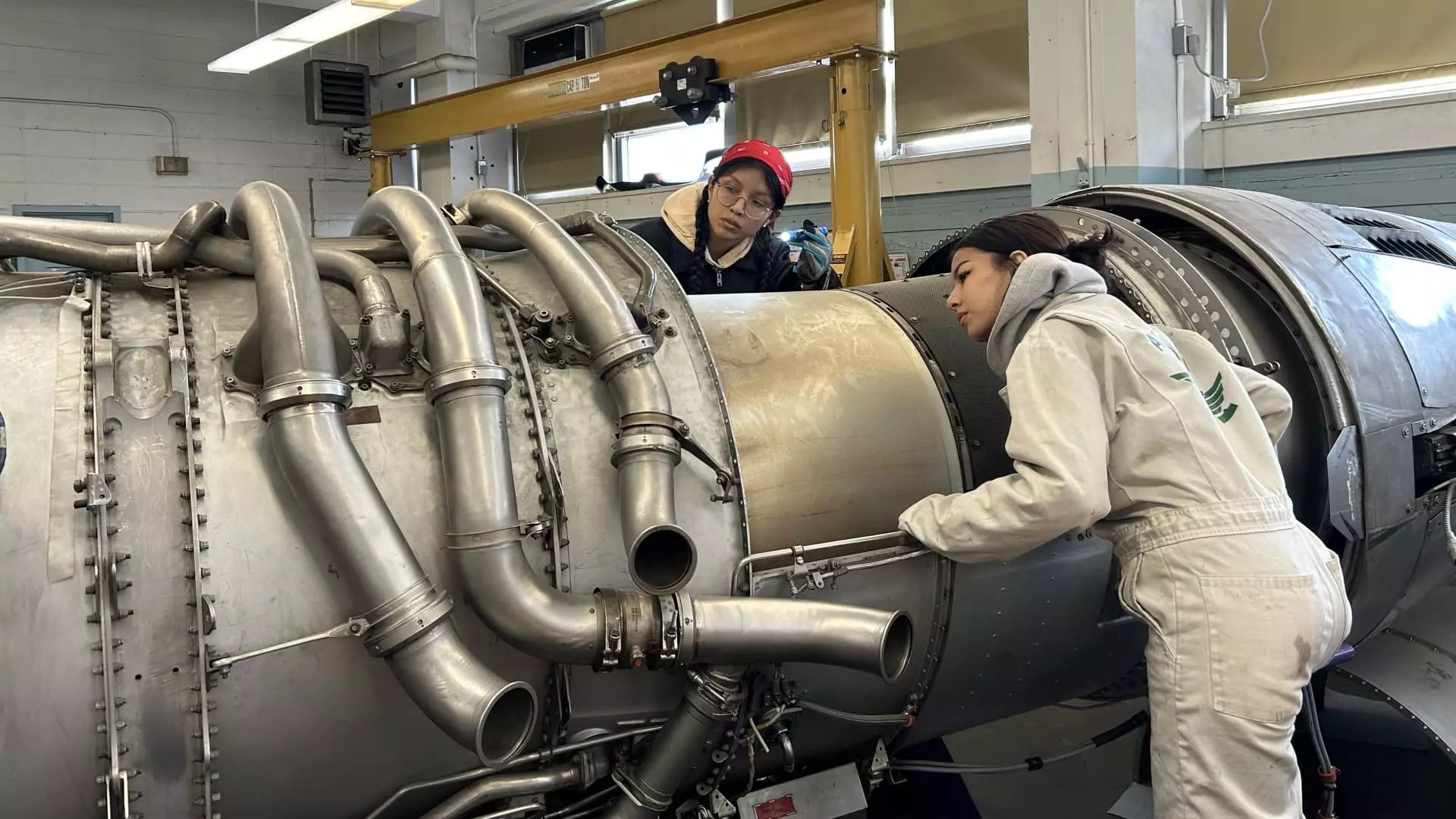As the United States grapples with the complexities of post-pandemic recovery, the aviation industry faces a looming crisis that could severely impact its future. The number of certified aircraft mechanics is dwindling, with the average age of professionals in the field rising alarmingly. According to a joint report from the Aviation Technician Education Council and Oliver Wyman, approximately 40% of certified mechanics are over the age of 60. This demographic shift means that a substantial workforce is approaching retirement, creating a chasm that threatens to ground the industry’s growth. By 2028, the industry anticipates a shortfall of 25,000 aircraft technicians, forcing airlines and manufacturers to scramble for solutions to a crisis they’ve known was coming for years.
The urgency of this situation cannot be overstated. With more seasoned technicians retiring and a decreased influx of younger talent, the fabric of the aviation workforce is at risk of unraveling. David Seymour, Chief Operating Officer of American Airlines, has explicitly stated that the organization is bracing for a crisis as veteran employees retire. The question looms large: where will the replacements come from? This is not merely a numerical shortfall; it represents a shift in workforce stability, directly threatening the reliability and safety of air travel—an essential service in modern society.
The Age of a New Generation in Aviation
The urgency of filling these skilled positions lies not only in numbers but in changing perceptions about career pathways within the aviation sector. Traditionally, manufacturing jobs, including those in aviation, are viewed as less desirable compared to technology-centric careers. However, initiatives like those from GE Aerospace suggest that the narrative can shift if the industry invests in appealing to younger generations. Moving beyond stereotypical views of “blue-collar” jobs, the aviation sector is now introducing high-tech innovations like laser-guided machining and precision engineering, positioning itself as an exciting career path.
Yet, as employers ramp up efforts to attract younger talent, skepticism lingers among potential recruits. The cost and time associated with acquiring FAA licenses—often taking years to achieve—can deter students from pursuing a career in aviation. Reports indicate that despite high pay prospects (with technician salaries projected to start at around $79,140 annually), many still weigh the immediate benefits of a traditional college education against the long-term prospects of working in a specialized field like aviation. This is where educational institutions, such as Aviation High School in Queens, New York, are stepping in. By integrating FAA license training into their curricula, they provide a critical bridge for students eager to jump directly into aviation careers.
Underappreciation of Manufacturing Jobs
Despite the potential for a lucrative career in aircraft mechanics, manufacturing jobs have suffered from a chronic image crisis. As highlighted by Professor Gordon Hanson from Harvard, the fetishization of manufacturing often overlooks the intricacies of skilled labor and its critical role in economic recovery. With fluctuating demand in sectors like garment manufacturing often overshadowing aviation, the aviation industry finds itself at a crossroads. Workers, both in terms of attitudes and mobility, are becoming increasingly skeptical about their career choices in a field that demands specialization yet has not garnered widespread prestige.
As young workers are guided through their career pathways, many still find themselves disillusioned with the prospects. Despite the promise of high wages, “We need to increase wages,” urges Sarah MacLeod, executive director of the Aeronautical Repair Station Association. This sentiment resonates strongly; while hiring ramps up, the urgency for fair compensation that reflects the skills required remains unaddressed. Aviation employers will need to focus on creating an environment where young workers not only feel welcomed but see a pathway for intrinsic value in their roles.
The Role of Young Talent in Aviation’s Future
The importance of attracting and retaining a younger workforce cannot be overstated. Airlines like American are wisely investing more than just tuition dollars; they are actively engaging with younger students, extending outreach efforts even into junior high schools. This strategic involvement isn’t just beneficial—it’s essential for generating interest in a critical industry. However, it requires a near-constant reinforcement of the message that aviation is evolving; it’s no longer just about manual labor but rather embracing cutting-edge technology and innovation.
The change in recruitment strategy marks a significant cultural shift—a recognition that enticing young minds involves more than just flashy presentations or marketing bluster. It’s about communicating the real impact their work can have on safety and reliability in the skies. Stories like that of Krystal Godinez, a recent graduate from GE’s apprenticeship program who transitioned from the automotive industry, embody the potential and resolve of young professionals ready to lead the charge in aviation’s next chapter. If the aviation industry can harness and nurture this burgeoning interest, it has the potential to not only meet its imminent staffing crisis but transform its entire workforce culture for the better.
In the end, addressing this staffing crisis goes beyond basic recruitment strategies; it requires an overarching commitment to elevating the profession and the critical roles these technicians play in an interconnected world. The urgency of the situation demands that the industry meets younger workers where they are, engaging them with the clarity of purpose and respect their careers deserve.


Leave a Reply